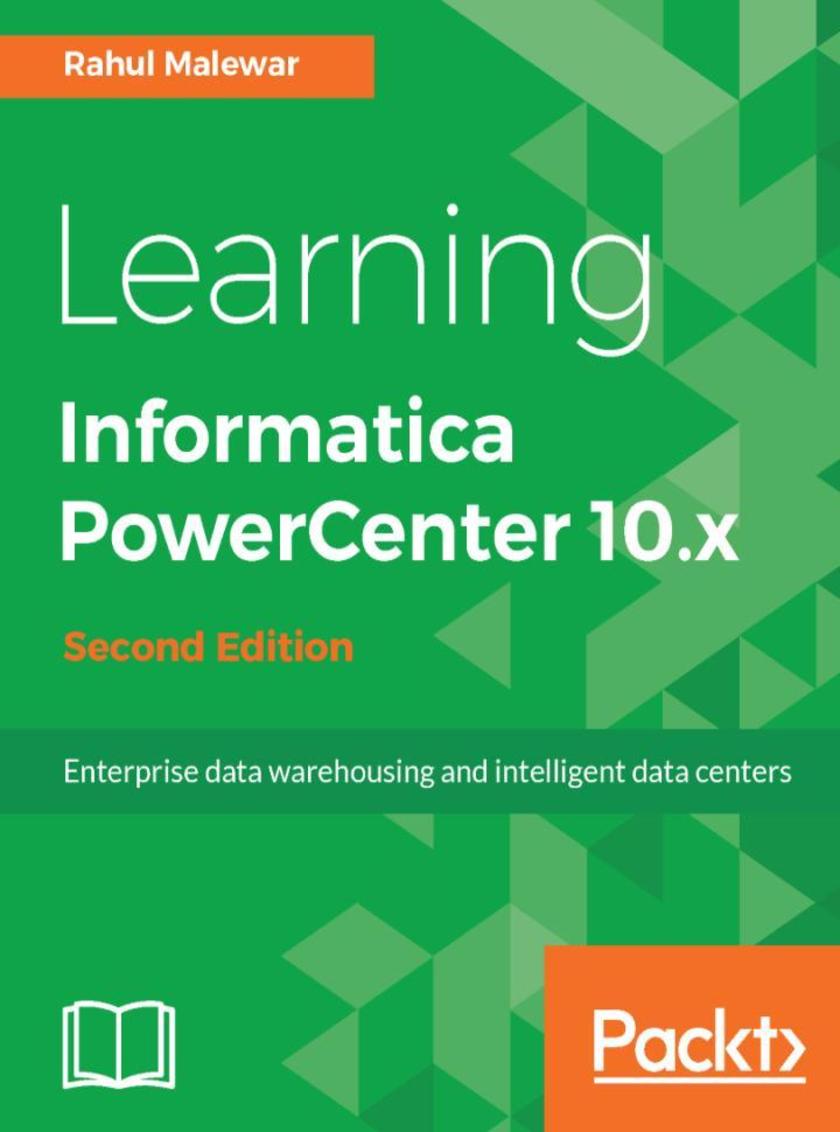
Learning Informatica PowerCenter 10.x - Second Edition
¥90.46
Harness the power and simplicity of Informatica PowerCenter 10.x to build and manage efficient data management solutions About This Book ? Master PowerCenter 10.x components to create, execute, monitor, and schedule ETL processes with a practical approach. ? An ideal guide to building the necessary skills and competencies to become an expert Informatica PowerCenter developer. ? A comprehensive guide to fetching/transforming and loading huge volumes of data in a very effective way, with reduced resource consumption Who This Book Is For If you wish to deploy Informatica in enterprise environments and build a career in data warehousing, then this book is for you. Whether you are a software developer/analytic professional and are new to Informatica or an experienced user, you will learn all the features of Informatica 10.x. A basic knowledge of programming and data warehouse concepts is essential. What You Will Learn ? Install or upgrade the components of the Informatica PowerCenter tool ? Work on various aspects of administrative skills and on the various developer Informatica PowerCenter screens such as Designer, Workflow Manager, Workflow Monitor, and Repository Manager. ? Get practical hands-on experience of various sections of Informatica PowerCenter, such as navigator, toolbar, workspace, control panel, and so on ? Leverage basic and advanced utilities, such as the debugger, target load plan, and incremental aggregation to process data ? Implement data warehousing concepts such as schemas and SCDs using Informatica ? Migrate various components, such as sources and targets, to another region using the Designer and Repository Manager screens ? Enhance code performance using tips such as pushdown optimization and partitioning In Detail Informatica PowerCenter is an industry-leading ETL tool, known for its accelerated data extraction, transformation, and data management strategies. This book will be your quick guide to exploring Informatica PowerCenter’s powerful features such as working on sources, targets, transformations, performance optimization, scheduling, deploying for processing, and managing your data at speed. First, you’ll learn how to install and configure tools. You will learn to implement various data warehouse and ETL concepts, and use PowerCenter 10.x components to build mappings, tasks, workflows, and so on. You will come across features such as transformations, SCD, XML processing, partitioning, constraint-based loading, Incremental aggregation, and many more. Moreover, you’ll also learn to deliver powerful visualizations for data profiling using the advanced monitoring dashboard functionality offered by the new version. Using data transformation technique, performance tuning, and the many new advanced features, this book will help you understand and process data for training or production purposes. The step-by-step approach and adoption of real-time scenarios will guide you through effectively accessing all core functionalities offered by Informatica PowerCenter version 10.x. Style and approach You'll get hand-on with sources, targets, transformations, performance optimization, scheduling, deploying for processing, and managing your data, and learn everything you need to become a proficient Informatica PowerCenter developer.
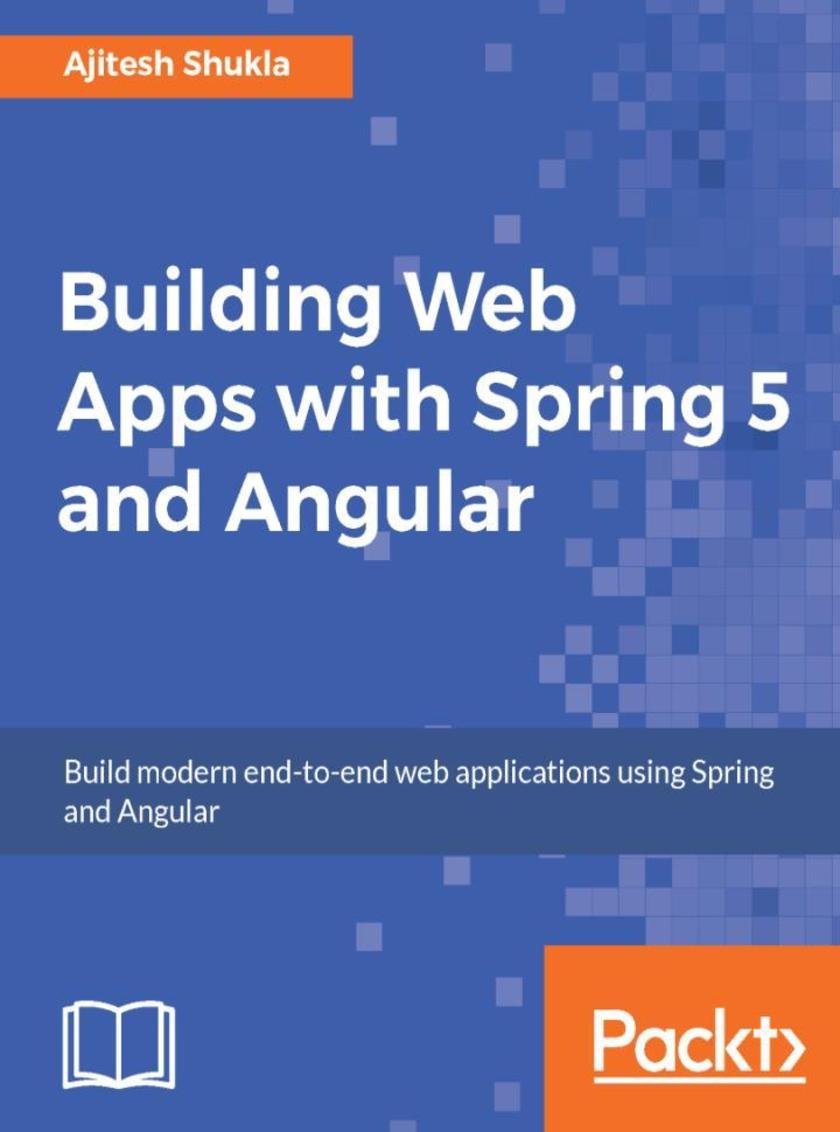
Building Web Apps with Spring 5 and Angular
¥90.46
A complete guide to build robust and scalable web applications with Spring and Angular. About This Book ? This hands on guide will teach you how to build an end-to-end modern web application using Spring and Angular. ? It is easy to read and will benefit Java developers who have been used to develop the back-end part of web application while front-end (UI) has been left for UI developers. ? Learn the core aspects involved in developing the backend and the UI, right from designing to integrating and deploying. Who This Book Is For This book is targeted towards Java Web Developers with a basic knowledge of Spring who want to build complete web applications in a fast and effective way. They will want to gain a stronghold on both frontend and backend development to advance in their careers. What You Will Learn ? Set up development environment for Spring Web App and Angular app. ? Process web request and response and build REST API endpoints. ? Create data access components using Spring Web MVC framework and Hibernate ? Use Junit 5 to test your application ? Learn the fundamental concepts around building Angular ? Configure and use Routes and Components. ? Protect Angular app content from common web vulnerabilities and attacks. ? Integrate Angular apps with Spring Boot Web API endpoints ? Deploy the web application based on CI and CD using Jenkins and Docker containers In Detail Spring is the most popular application development framework being adopted by millions of developers around the world to create high performing, easily testable, reusable code. Its lightweight nature and extensibility helps you write robust and highly-scalable server-side web applications. Coupled with the power and efficiency of Angular, creating web applications has never been easier. If you want build end-to-end modern web application using Spring and Angular, then this book is for you. The book directly heads to show you how to create the backend with Spring, showing you how to configure the Spring MVC and handle Web requests. It will take you through the key aspects such as building REST API endpoints, using Hibernate, working with Junit 5 etc. Once you have secured and tested the backend, we will go ahead and start working on the front end with Angular. You will learn about fundamentals of Angular and Type* and create an SPA using components, routing etc. Finally, you will see how to integrate both the applications with REST protocol and deploy the application using tools such as Jenkins and Docker. Style and approach This is a straightforward guide that shows how to build a complete web application in Angular and Spring.
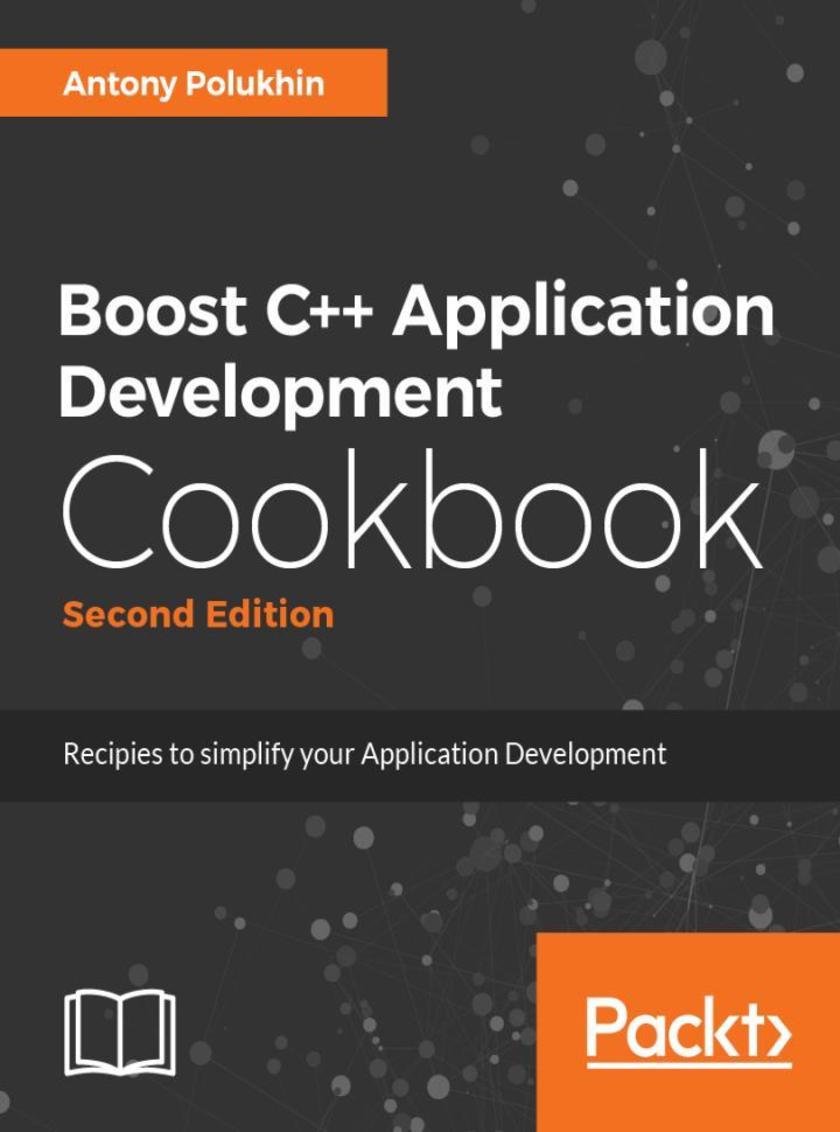
Boost C++ Application Development Cookbook - Second Edition
¥90.46
Learn to build applications faster and better by leveraging the real power of Boost and C++ About This Book ? Learn to use the Boost libraries to simplify your application development ? Learn to develop high quality, fast and portable applications ? Learn the relations between Boost and C++11/C++4/C++17 Who This Book Is For This book is for developers looking to improve their knowledge of Boost and who would like to simplify their application development processes. Prior C++ knowledge and basic knowledge of the standard library is assumed. What You Will Learn ? Get familiar with new data types for everyday use ? Use smart pointers to manage resources ? Get to grips with compile-time computations and assertions ? Use Boost libraries for multithreading ? Learn about parallel execution of different task ? Perform common string-related tasks using Boost libraries ? Split all the processes, computations, and interactions to tasks and process them independently ? Learn the basics of working with graphs, stacktracing, testing and interprocess communications ? Explore different helper macros used to detect compiler, platform and Boost features In Detail If you want to take advantage of the real power of Boost and C++ and avoid the confusion about which library to use in which situation, then this book is for you. Beginning with the basics of Boost C++, you will move on to learn how the Boost libraries simplify application development. You will learn to convert data such as string to numbers, numbers to string, numbers to numbers and more. Managing resources will become a piece of cake. You’ll see what kind of work can be done at compile time and what Boost containers can do. You will learn everything for the development of high quality fast and portable applications. Write a program once and then you can use it on Linux, Windows, MacOS, Android operating systems. From manipulating images to graphs, directories, timers, files, networking – everyone will find an interesting topic. Be sure that knowledge from this book won’t get outdated, as more and more Boost libraries become part of the C++ Standard. Style and approach Clear step-by-step recipes that will help you take advantage of the real power of Boost.
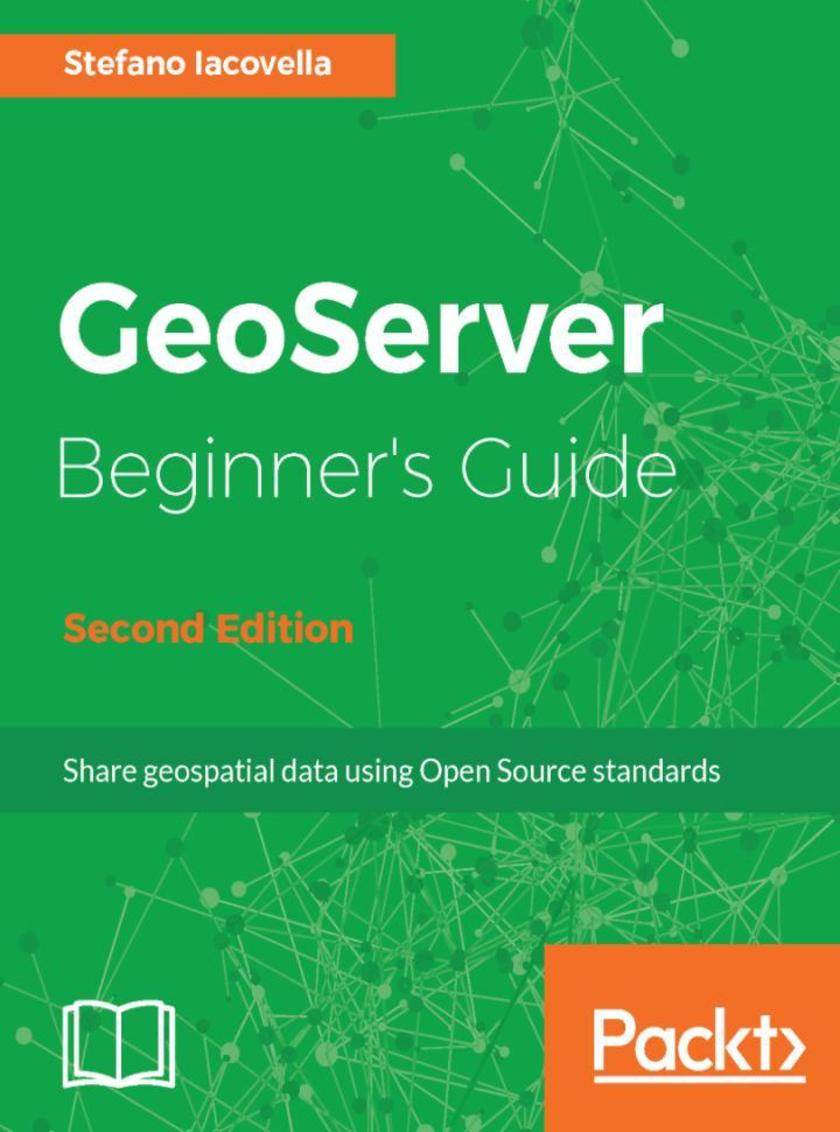
GeoServer Beginner's Guide - Second Edition
¥90.46
This step-by-step guide will teach you how to use GeoServer to build custom and interactive maps using your data. About This Book ? Exploit the power of GeoServer to provide agile, flexible, and low -cost community projects ? Share real-time maps quickly ? Boost your map server's performance using the power and flexibility of GeoServer Who This Book Is For If you are a web developer with knowledge of server side *ing, have experience in installing applications on the server, and want to go beyond Google Maps by offering dynamically built maps on your site with your latest geospatial data stored in MySQL, PostGIS, MySQL, or Oracle, this is the book for you. What You Will Learn ? Install GeoServer quickly ? Access dynamic real-time geospatial data that you can easily integrate into your own web-based application ? Create custom styles for lines, points, and polygons for great-looking maps ? Command GeoServer remotely using REST ? Tune your GeoServer instance for performance ? Move GeoServer into production ? Learn advanced topics to extend GeoServer's capabilities In Detail GeoServer is an opensource server written in Java that allows users to share, process, and edit geospatial data. This book will guide you through the new features and improvements of GeoServer and will help you get started with it. GeoServer Beginner's Guide gives you the impetus to build custom maps using your data without the need for costly commercial software licenses and restrictions. Even if you do not have prior GIS knowledge, you will be able to make interactive maps after reading this book. You will install GeoServer, access your data from a database, and apply style points, lines, polygons, and labels to impress site visitors with real-time maps. Then you follow a step-by-step guide that installs GeoServer in minutes. You will explore the web-based administrative interface to connect to backend data stores such as PostGIS, and Oracle. Going ahead, you can display your data on web-based interactive maps, use style lines, points, polygons, and embed images to visualize this data for your web visitors. You will walk away from this book with a working application ready for production. After reading GeoServer Beginner's Guide, you will be able to build beautiful custom maps on your website using your geospatial data. Style and approach Step-by-step instructions are included and the needs of a beginner are totally satisfied by the book. The book consists of plenty of examples with accompanying screenshots and code for an easy learning curve.
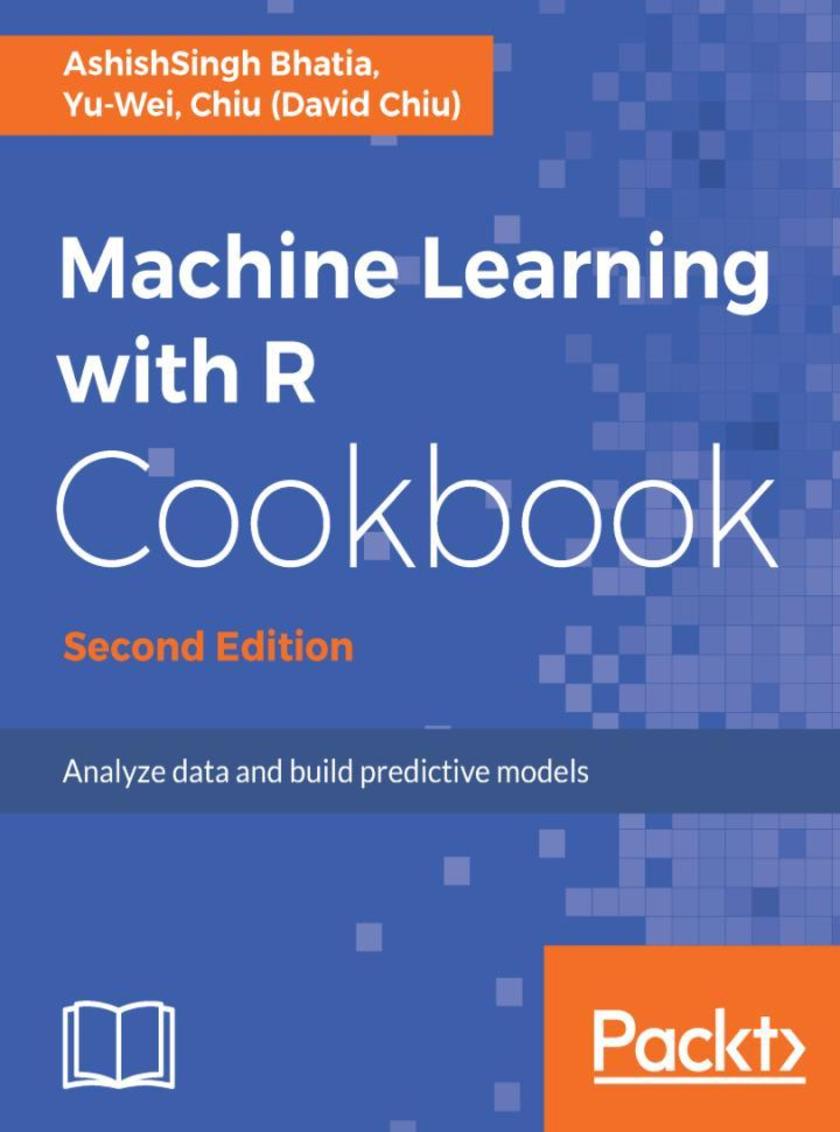
Machine Learning with R Cookbook - Second Edition
¥90.46
Explore over 110 recipes to analyze data and build predictive models with simple and easy-to-use R code About This Book ? Apply R to simplify predictive modeling with short and simple code ? Use machine learning to solve problems ranging from small to big data ? Build a training and testing dataset, applying different classification methods. Who This Book Is For This book is for data science professionals, data analysts, or people who have used R for data analysis and machine learning who now wish to become the go-to person for machine learning with R. Those who wish to improve the efficiency of their machine learning models and need to work with different kinds of data set will find this book very insightful. What You Will Learn ? Create and inspect transaction datasets and perform association analysis with the Apriori algorithm ? Visualize patterns and associations using a range of graphs and find frequent item-sets using the Eclat algorithm ? Compare differences between each regression method to discover how they solve problems ? Detect and impute missing values in air quality data ? Predict possible churn users with the classification approach ? Plot the autocorrelation function with time series analysis ? Use the Cox proportional hazards model for survival analysis ? Implement the clustering method to segment customer data ? Compress images with the dimension reduction method ? Incorporate R and Hadoop to solve machine learning problems on big data In Detail Big data has become a popular buzzword across many industries. An increasing number of people have been exposed to the term and are looking at how to leverage big data in their own businesses, to improve sales and profitability. However, collecting, aggregating, and visualizing data is just one part of the equation. Being able to extract useful information from data is another task, and a much more challenging one. Machine Learning with R Cookbook, Second Edition uses a practical approach to teach you how to perform machine learning with R. Each chapter is divided into several simple recipes. Through the step-by-step instructions provided in each recipe, you will be able to construct a predictive model by using a variety of machine learning packages. In this book, you will first learn to set up the R environment and use simple R commands to explore data. The next topic covers how to perform statistical analysis with machine learning analysis and assess created models, covered in detail later on in the book. You'll also learn how to integrate R and Hadoop to create a big data analysis platform. The detailed illustrations provide all the information required to start applying machine learning to individual projects. With Machine Learning with R Cookbook, machine learning has never been easier. Style and approach This is an easy-to-follow guide packed with hands-on examples of machine learning tasks. Each topic includes step-by-step instructions on tackling difficulties faced when applying R to machine learning.
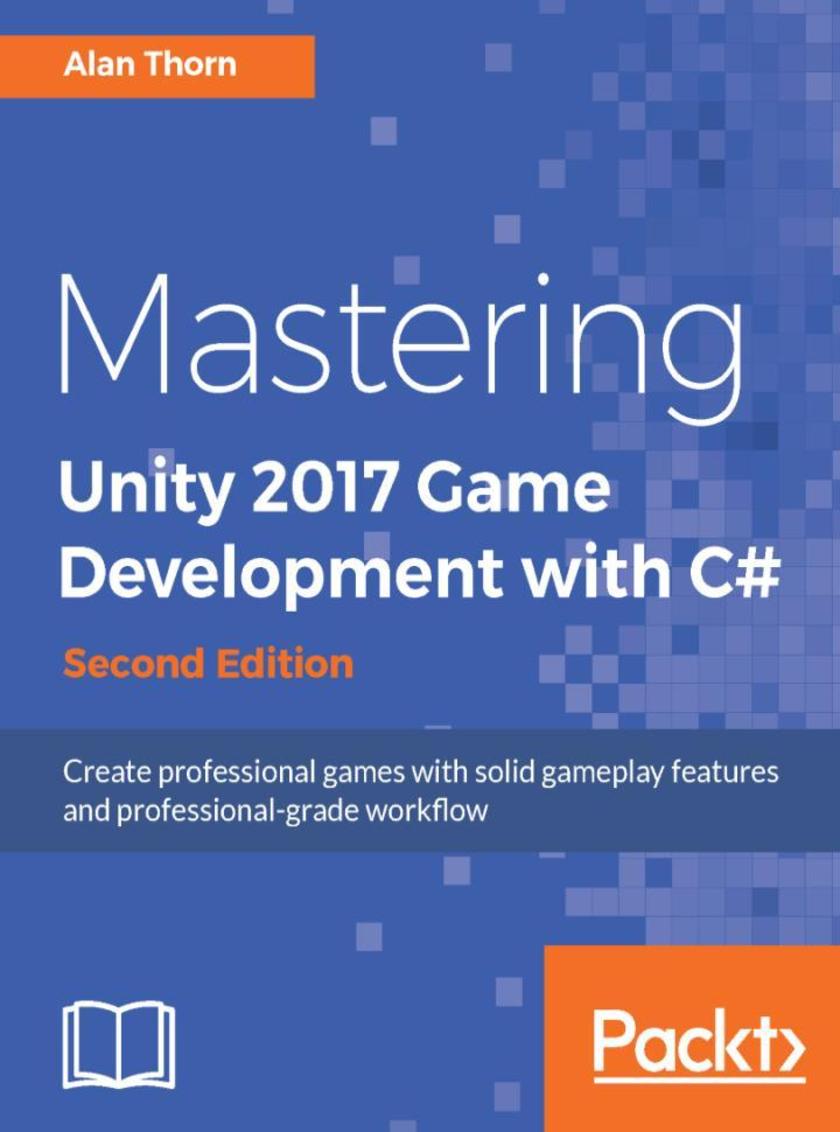
Mastering Unity 2017 Game Development with C# - Second Edition
¥90.46
Master realistic animations and graphics, particle systems, game AI and physics, sprites and VR development with Unity 2017 About This Book ? Create professional grade games with realistic animation and graphics, particle systems and game physics with Unity 2017 ? Unleash the power of C# *ing to create intelligent game AI and professional grade game workflows. ? Create immersive VR games using the latest Unity 2017 VR SDK. Who This Book Is For If you are a Unity developer who now wants to develop and deploy interesting games by leveraging the new features of Unity 2017, then this is the book for you. Basic knowledge of C# programming is assumed. What You Will Learn ? Explore hands-on tasks and real-world scenarios to make a Unity horror adventure game ? Create enemy characters that act intelligently and make reasoned decisions ? Use data files to save and restore game data in a way that is platform-agnostic ? Get started with VR development ? Use navigation meshes, occlusion culling, and Profiler tools ? Work confidently with GameObjects, rotations, and transformations ? Understand specific gameplay features such as AI enemies, inventory systems, and level design In Detail Do you want to make the leap from being an everyday Unity developer to being a pro game developer? Then look no further! This book is your one-stop solution to creating mesmerizing games with lifelike features and amazing gameplay. This book focuses in some detail on a practical project with Unity, building a first-person game with many features. You'll delve into the architecture of a Unity game, creating expansive worlds, interesting render effects, and other features to make your games special. You will create individual game components, use efficient animation techniques, and implement collision and physics effectively. Specifically, we'll explore optimal techniques for importing game assets, such as meshes and textures; tips and tricks for effective level design; how to animate and * NPCs; how to configure and deploy to mobile devices; how to prepare for VR development; how to work with version control; and more. By the end of this book, you'll have developed sufficient competency in Unity development to produce fun games with confidence. Style and approach This book takes an easy-to-follow, step-by-step tutorial approach. You will create an advanced level Unity game with an emphasis on leveraging advanced Unity 2017 features while developing the game in its entirety.

Augmented Reality for Developers
¥90.46
Build exciting AR applications on mobile and wearable devices with Unity 3D, Vuforia, ARToolKit, Microsoft Mixed Reality HoloLens, Apple ARKit, and Google ARCore About This Book ? Create unique AR applications from scratch, from beginning to end, with step-by-step tutorials ? Use Unity 3D to efficiently create AR apps for Android, iOS, and Windows platforms ? Use Vuforia, ARTookKit, Windows Mixed Reality, and Apple ARKit to build AR projects for a variety of markets ? Learn best practices in AR user experience, software design patterns, and 3D graphics Who This Book Is For The ideal target audience for this book is developers who have some experience in mobile development, either Android or iOS. Some broad web development experience would also be beneficial. What You Will Learn ? Build Augmented Reality applications through a step-by-step, tutorial-style project approach ? Use the Unity 3D game engine with the Vuforia AR platform, open source ARToolKit, Microsoft's Mixed Reality Toolkit, Apple ARKit, and Google ARCore, via the C# programming language ? Implement practical demo applications of AR including education, games, business marketing, and industrial training ? Employ a variety of AR recognition modes, including target images, markers, objects, and spatial mapping ? Target a variety of AR devices including phones, tablets, and wearable smartglasses, for Android, iOS, and Windows HoloLens ? Develop expertise with Unity 3D graphics, UIs, physics, and event systems ? Explore and utilize AR best practices and software design patterns In Detail Augmented Reality brings with it a set of challenges that are unseen and unheard of for traditional web and mobile developers. This book is your gateway to Augmented Reality development—not a theoretical showpiece for your bookshelf, but a handbook you will keep by your desk while coding and architecting your first AR app and for years to come. The book opens with an introduction to Augmented Reality, including markets, technologies, and development tools. You will begin by setting up your development machine for Android, iOS, and Windows development, learning the basics of using Unity and the Vuforia AR platform as well as the open source ARToolKit and Microsoft Mixed Reality Toolkit. You will also receive an introduction to Apple's ARKit and Google's ARCore! You will then focus on building AR applications, exploring a variety of recognition targeting methods. You will go through multiple complete projects illustrating key market sectors including business marketing, education, industrial training, and gaming. By the end of the book, you will have gained the necessary knowledge to make quality content appropriate for a range of AR devices, platforms, and intended uses. Style and approach This book adopts a practical, step-by-step, tutorial-style approach. The design principles and methodology will be explained by creating different modules of the AR app.
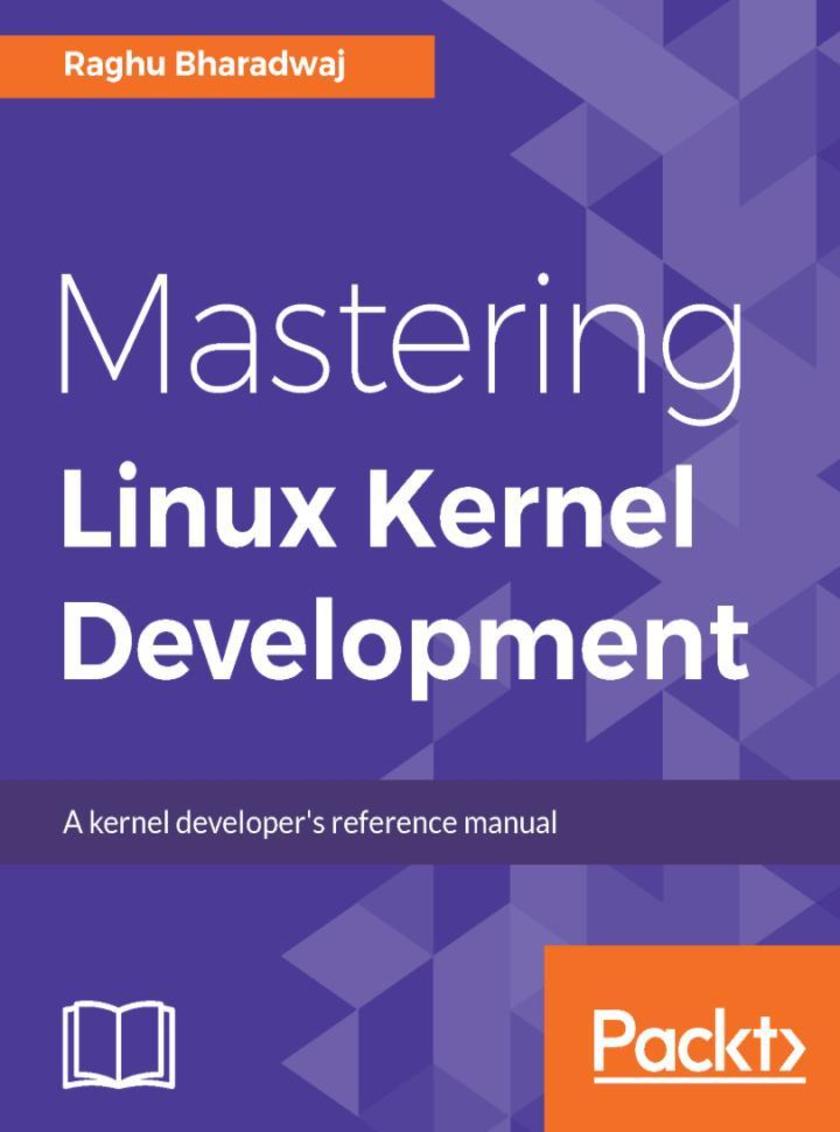
Mastering Linux Kernel Development
¥90.46
Explore Implementation of core kernel subsystems About This Book ? Master the design, components, and structures of core kernel subsystems ? Explore kernel programming interfaces and related algorithms under the hood ? Completely updated material for the 4.12.10 kernel Who This Book Is For If you are a kernel programmer with a knowledge of kernel APIs and are looking to build a comprehensive understanding, and eager to explore the implementation, of kernel subsystems, this book is for you. It sets out to unravel the underlying details of kernel APIs and data structures, piercing through the complex kernel layers and gives you the edge you need to take your skills to the next level. What You Will Learn ? Comprehend processes and fles—the core abstraction mechanisms of the Linux kernel that promote effective simplification and dynamism ? Decipher process scheduling and understand effective capacity utilization under general and real-time dispositions ? Simplify and learn more about process communication techniques through signals and IPC mechanisms ? Capture the rudiments of memory by grasping the key concepts and principles of physical and virtual memory management ? Take a sharp and precise look at all the key aspects of interrupt management and the clock subsystem ? Understand concurrent execution on SMP platforms through kernel synchronization and locking techniques In Detail Mastering Linux Kernel Development looks at the Linux kernel, its internal arrangement and design, and various core subsystems, helping you to gain significant understanding of this open source marvel. You will look at how the Linux kernel, which possesses a kind of collective intelligence thanks to its scores of contributors, remains so elegant owing to its great design. This book also looks at all the key kernel code, core data structures, functions, and macros, giving you a comprehensive foundation of the implementation details of the kernel’s core services and mechanisms. You will also look at the Linux kernel as well-designed software, which gives us insights into software design in general that are easily scalable yet fundamentally strong and safe. By the end of this book, you will have considerable understanding of and appreciation for the Linux kernel. Style and approach Each chapter begins with the basic conceptual know-how for a subsystem and extends into the details of its implementation. We use appropriate code excerpts of critical routines and data structures for subsystems.
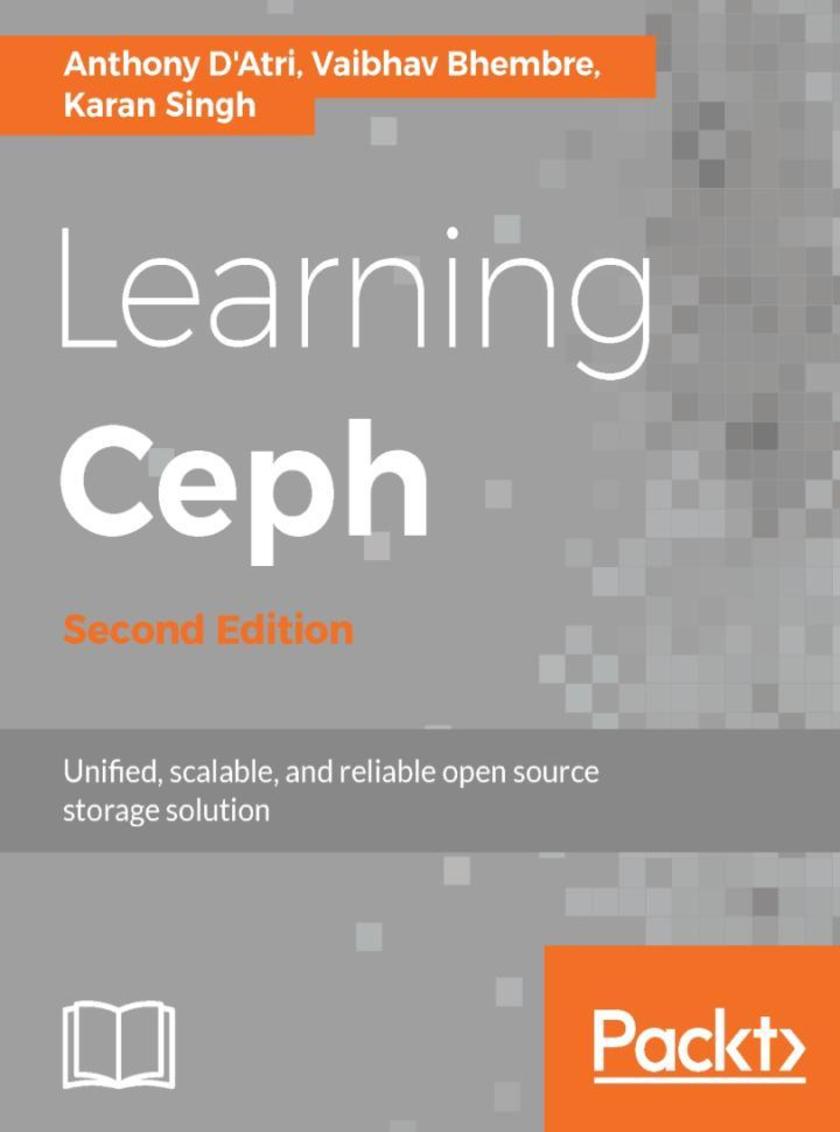
Learning Ceph - Second Edition
¥90.46
Implement and manage your software-defined, massively scalable storage system About This Book ? Explore Ceph's architecture in order to achieve scalability and high availability ? Learn to utilize Ceph efficiently with the help of practical examples ? Successfully implement Ceph clusters to scale-out storage solutions along with outstanding data protection Who This Book Is For A basic knowledge of GNU/Linux, and storage systems, and server components is assumed. If you have no experience of software-defined storage solutions and Ceph, but are eager to learn about them, this is the book for you. What You Will Learn ? The limitations of existing systems and why you should use Ceph as a storage solution ? Familiarity with Ceph's architecture, components, and services ? Instant deployment and testing of Ceph within a Vagrant and VirtualBox environment ? Ceph operations including maintenance, monitoring, and troubleshooting ? Storage provisioning of Ceph's block, object, and filesystem services ? Integrate Ceph with OpenStack ? Advanced topics including erasure coding, CRUSH maps, and performance tuning ? Best practices for your Ceph clusters In Detail Learning Ceph, Second Edition will give you all the skills you need to plan, deploy, and effectively manage your Ceph cluster. You will begin with the first module, where you will be introduced to Ceph use cases, its architecture, and core projects. In the next module, you will learn to set up a test cluster, using Ceph clusters and hardware selection. After you have learned to use Ceph clusters, the next module will teach you how to monitor cluster health, improve performance, and troubleshoot any issues that arise. In the last module, you will learn to integrate Ceph with other tools such as OpenStack, Glance, Manila, Swift, and Cinder. By the end of the book you will have learned to use Ceph effectively for your data storage requirements. Style and approach This step-by-step guide, including use cases and examples, not only helps you to easily use Ceph but also demonstrates how you can use it to solve any of your server or drive storage issues.
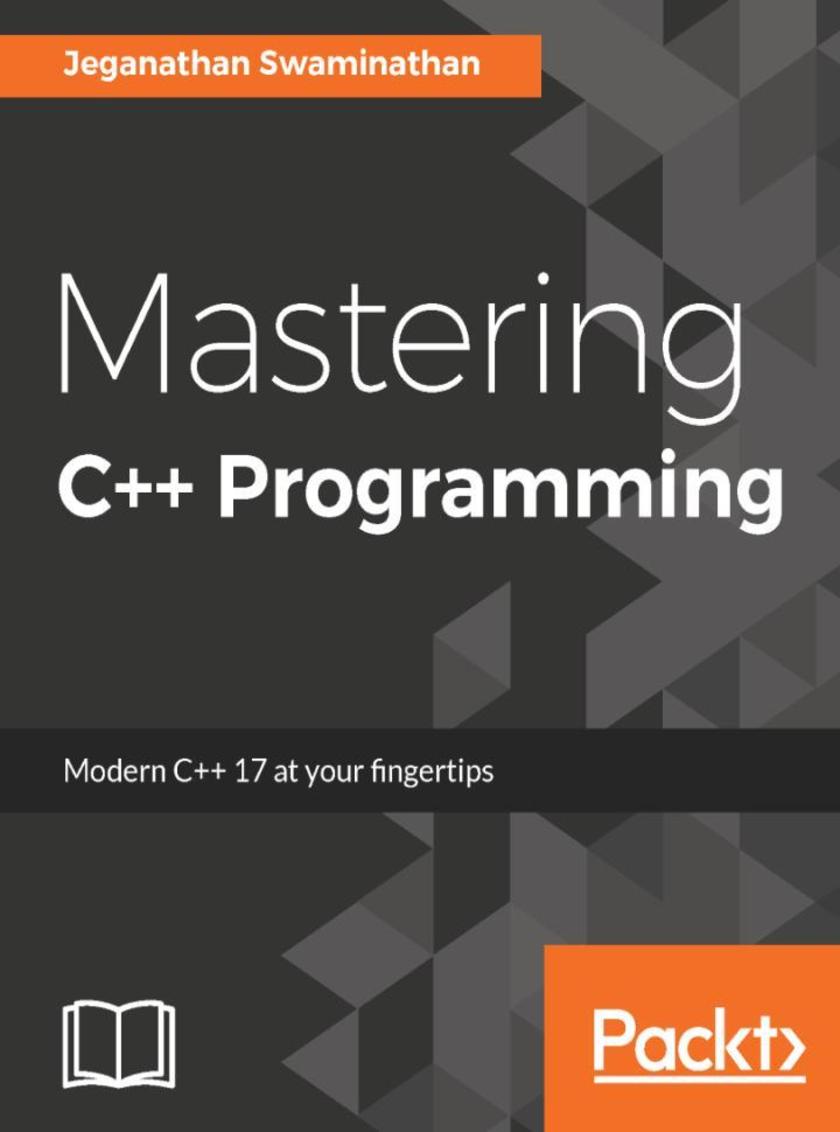
Mastering C++ Programming
¥90.46
Take your C++ coding to the next level by leveraging the latest features and advanced techniques to building high performing, reliable applications. About This Book ? Get acquainted with the latest features in C++ 17 ? Take advantage of the myriad of features and possibilities that C++ offers to build real-world applications ? Write clear and expressive code in C++, and get insights into how to keep your code error-free Who This Book Is For This book is for experienced C++ developers. If you are a novice C++ developer, then it’s highly recommended that you get a solid understanding of the C++ language before reading this book What You Will Learn ? Write modular C++ applications in terms of the existing and newly introduced features ? Identify code-smells, clean up, and refactor legacy C++ applications ? Leverage the possibilities provided by Cucumber and Google Test/Mock to automate test cases ? Test frameworks with C++ ? Get acquainted with the new C++17 features ? Develop GUI applications in C++ ? Build portable cross-platform applications using standard C++ features In Detail C++ has come a long way and has now been adopted in several contexts. Its key strengths are its software infrastructure and resource-constrained applications. The C++ 17 release will change the way developers write code, and this book will help you master your developing skills with C++. With real-world, practical examples explaining each concept, the book will begin by introducing you to the latest features in C++ 17. It encourages clean code practices in C++ in general, and demonstrates the GUI app-development options in C++. You’ll get tips on avoiding memory leaks using smart-pointers. Next, you’ll see how multi-threaded programming can help you achieve concurrency in your applications. Moving on, you’ll get an in-depth understanding of the C++ Standard Template Library. We show you the concepts of implementing TDD and BDD in your C++ programs, and explore template-based generic programming, giving you the expertise to build powerful applications. Finally, we’ll round up with debugging techniques and best practices.By the end of the book, you’ll have an in-depth understanding of the language and its various facets. Style and approach This straightforward guide will help you level up your skills in C++ programming, be it for enterprise software or for low-latency applications like games. Filled with real-world, practical examples, this book will take you gradually up the steep learning curve that is C++.

Domain-Driven Design in PHP
¥90.46
Real examples written in PHP showcasing DDD Architectural Styles, Tactical Design, and Bounded Context Integration About This Book ? Focuses on practical code rather than theory ? Full of real-world examples that you can apply to your own projects ? Shows how to build PHP apps using DDD principles Who This Book Is For This book is for PHP developers who want to apply a DDD mindset to their code. You should have a good understanding of PHP and some knowledge of DDD. This book doesn’t dwell on the theory, but instead gives you the code that you need. What You Will Learn ? Correctly design all design elements of Domain-Driven Design with PHP ? Learn all tactical patterns to achieve a fully worked-out Domain-Driven Design ? Apply hexagonal architecture within your application ? Integrate bounded contexts in your applications ? Use REST and Messaging approaches In Detail Domain-Driven Design (DDD) has arrived in the PHP community, but for all the talk, there is very little real code. Without being in a training session and with no PHP real examples, learning DDD can be challenging. This book changes all that. It details how to implement tactical DDD patterns and gives full examples of topics such as integrating Bounded Contexts with REST, and DDD messaging strategies. In this book, the authors show you, with tons of details and examples, how to properly design Entities, Value Objects, Services, Domain Events, Aggregates, Factories, Repositories, Services, and Application Services with PHP. They show how to apply Hexagonal Architecture within your application whether you use an open source framework or your own. Style and approach This highly practical book shows developers how to apply domain-driven design principles to PHP. It is full of solid code examples to work through.
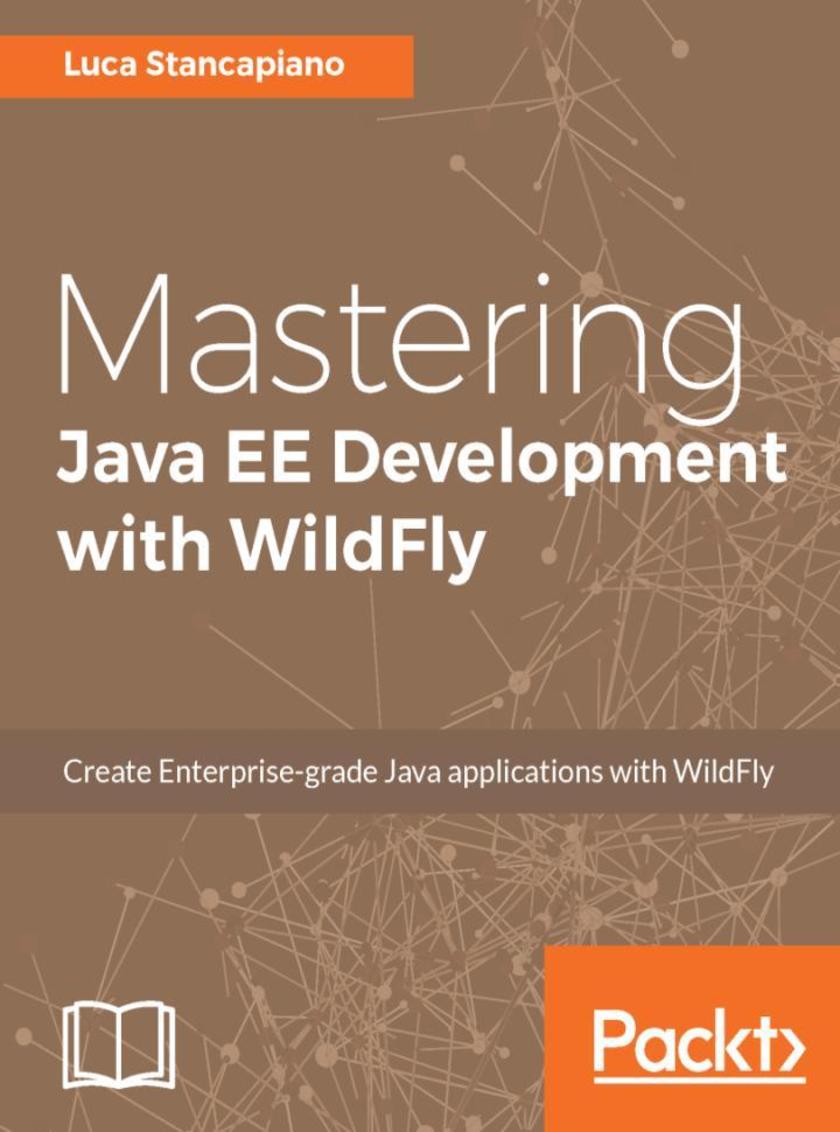
Mastering Java EE Development with WildFly
¥90.46
Your one stop solution to create highly scalable enterprise grade Java applications with WildFly. About This Book ? Master Java EE development with the latest WildFly 10 application server. ? Integrate with JSF and JMS and use efficient load balancing techniques to create real-time apps ? Integrate your backend JavaScript code seamlessly into Java applications Who This Book Is For If you are a Java developer with at least basic knowledge of Java EE, then this book is for you. No previous knowledge of WildFly is required. What You Will Learn ? Configure the development environment along with native and cloud installation of WildFly ? Write a DB schema and the relative entities and how to use the relationships between the entities ? Analyze with examples all the java annotations to manage the EJB and the configuration to get better performances ? Write different REST services through the EJB ? Implement Web sockets 1.0 and know why and when use the web sockets ? Work with Active MQ and write JMS clients to manage the authentication and authorization in the clients ? Configure the mail server through the wildfly console ? Learn how and when to use a new feature JAX-RS 2.0, which is the asynchronous call through REST ? Use the new JSF features of Wildfly 10 such as Mojarra 2.2, JSF 2.2, Richfaces 4.5 In Detail Packed with rich assets and APIs, Wildfly 10 allows you to create state-of-the-art Java applications. This book will help you take your understanding of Java EE to the next level by creating distributed Java applications using Wildfly. The book begins by showing how to get started with a native installation of WildFly and it ends with a cloud installation. After setting up the development environment, you will implement and work with different WildFly features, such as implementing JavaServer Pages. You will also learn how you can use clustering so that your apps can handle a high volume of data traffic. You will also work with enterprise JavaBeans, solve issues related to failover, and implement Java Message Service integration. Moving ahead, you will be working with Java Naming and Directory Interface, Java Transaction API, and use ActiveMQ for message relay and message querying. This book will also show you how you can use your existing backend JavaScript code in your application. By the end of the book, you’ll have gained the knowledge to implement the latest Wildfly features in your Java applications. Style and approach Each part of this book shows you how to use different features of WildFly 10 to create enterprise grade Java applications as easily as possible.
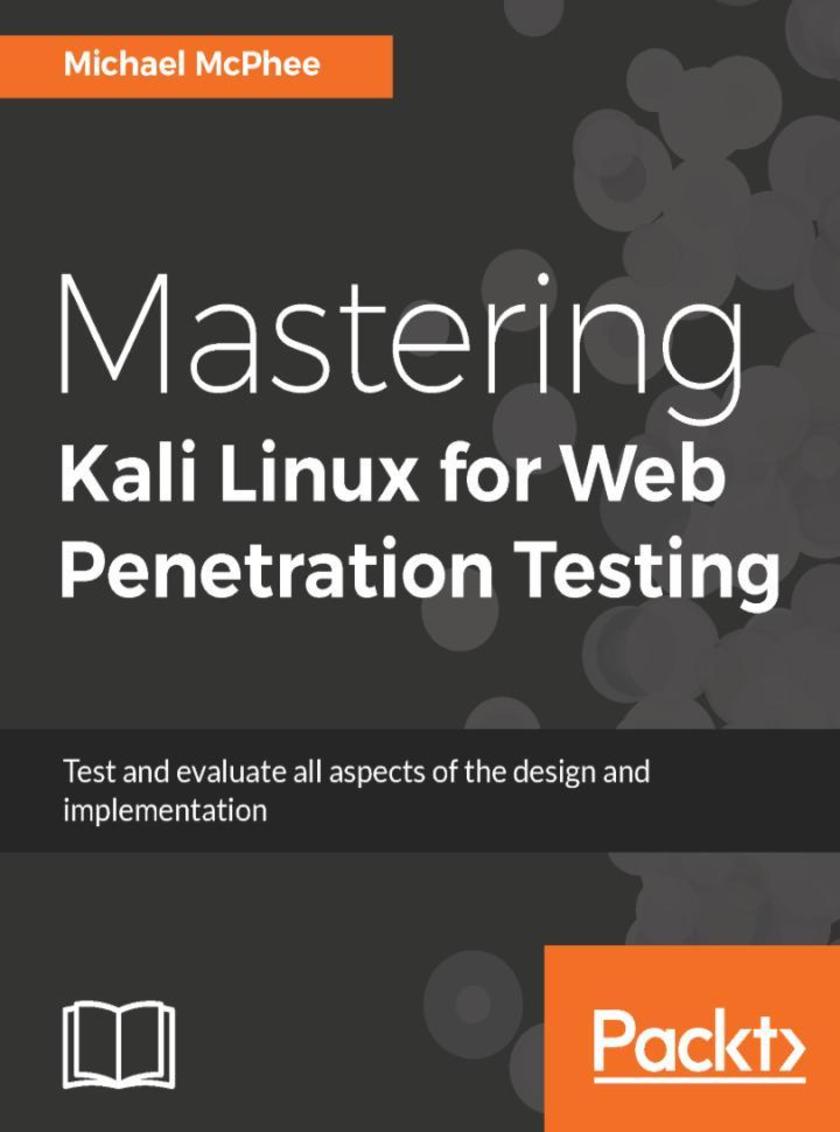
Mastering Kali Linux for Web Penetration Testing
¥90.46
Master the art of exploiting advanced web penetration techniques with Kali Linux 2016.2 About This Book ? Make the most out of advanced web pen-testing techniques using Kali Linux 2016.2 ? Explore how Stored (a.k.a. Persistent) XSS attacks work and how to take advantage of them ? Learn to secure your application by performing advanced web based attacks. ? Bypass internet security to traverse from the web to a private network. Who This Book Is For This book targets IT pen testers, security consultants, and ethical hackers who want to expand their knowledge and gain expertise on advanced web penetration techniques. Prior knowledge of penetration testing would be beneficial. What You Will Learn ? Establish a fully-featured sandbox for test rehearsal and risk-free investigation of applications ? Enlist open-source information to get a head-start on enumerating account credentials, mapping potential dependencies, and discovering unintended backdoors and exposed information ? Map, scan, and spider web applications using nmap/zenmap, nikto, arachni, webscarab, w3af, and NetCat for more accurate characterization ? Proxy web transactions through tools such as Burp Suite, OWASP's ZAP tool, and Vega to uncover application weaknesses and manipulate responses ? Deploy SQL injection, cross-site *ing, Java vulnerabilities, and overflow attacks using Burp Suite, websploit, and SQLMap to test application robustness ? Evaluate and test identity, authentication, and authorization schemes and sniff out weak cryptography before the black hats do In Detail You will start by delving into some common web application architectures in use, both in private and public cloud instances. You will also learn about the most common frameworks for testing, such as OWASP OGT version 4, and how to use them to guide your efforts. In the next section, you will be introduced to web pentesting with core tools and you will also see how to make web applications more secure through rigorous penetration tests using advanced features in open source tools. The book will then show you how to better hone your web pentesting skills in safe environments that can ensure low-risk experimentation with the powerful tools and features in Kali Linux that go beyond a typical *-kiddie approach. After establishing how to test these powerful tools safely, you will understand how to better identify vulnerabilities, position and deploy exploits, compromise authentication and authorization, and test the resilience and exposure applications possess. By the end of this book, you will be well-versed with the web service architecture to identify and evade various protection mechanisms that are used on the Web today. You will leave this book with a greater mastery of essential test techniques needed to verify the secure design, development, and operation of your customers' web applications. Style and approach An advanced-level guide filled with real-world examples that will help you take your web application’s security to the next level by using Kali Linux 2016.2.
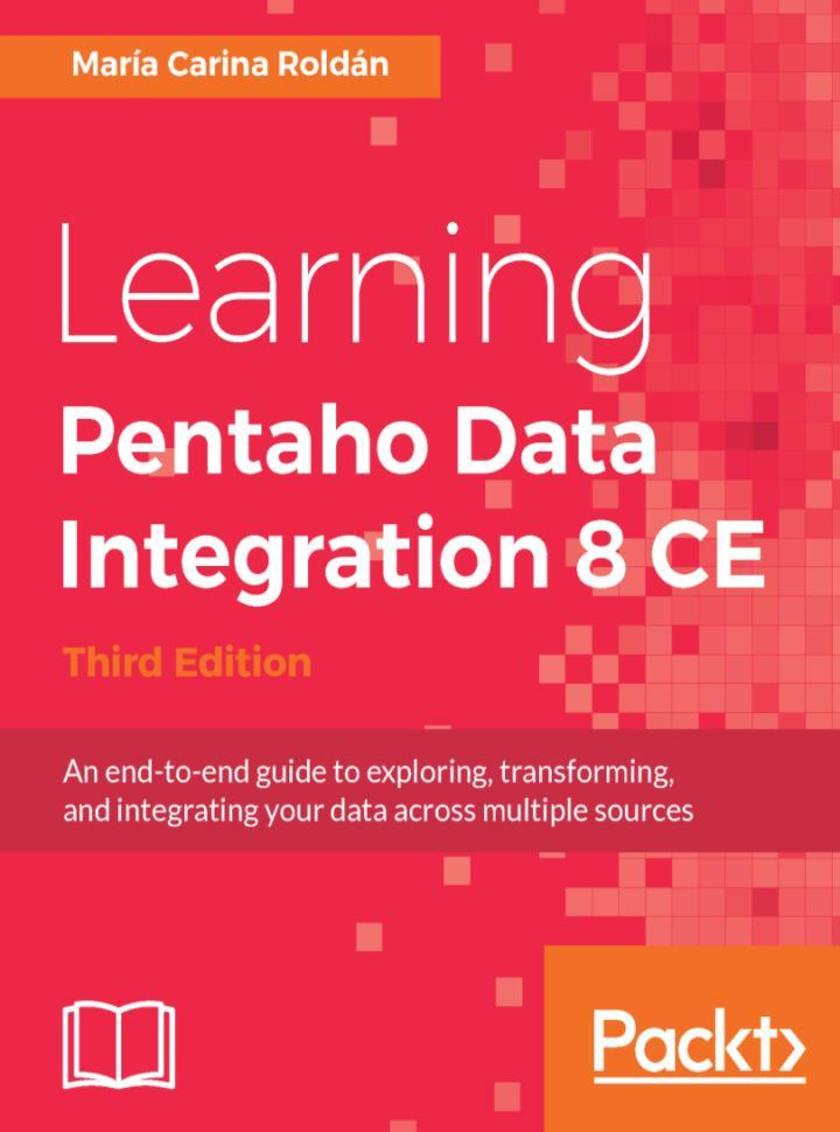
Learning Pentaho Data Integration 8 CE - Third Edition
¥90.46
Get up and running with the Pentaho Data Integration tool using this hands-on, easy-to-read guide About This Book ? Manipulate your data by exploring, transforming, validating, and integrating it using Pentaho Data Integration 8 CE ? A comprehensive guide exploring the features of Pentaho Data Integration 8 CE ? Connect to any database engine, explore the databases, and perform all kind of operations on relational databases Who This Book Is For This book is a must-have for software developers, business intelligence analysts, IT students, or anyone involved or interested in developing ETL solutions. If you plan on using Pentaho Data Integration for doing any data manipulation task, this book will help you as well. This book is also a good starting point for data warehouse designers, architects, or anyone who is responsible for data warehouse projects and needs to load data into them. What You Will Learn ? Explore the features and capabilities of Pentaho Data Integration 8 Community Edition ? Install and get started with PDI ? Learn the ins and outs of Spoon, the graphical designer tool ? Learn to get data from all kind of data sources, such as plain files, Excel spreadsheets, databases, and XML files ? Use Pentaho Data Integration to perform CRUD (create, read, update, and delete) operations on relationaldatabases ? Populate a data mart with Pentaho Data Integration ? Use Pentaho Data Integration to organize files and folders, run daily processes, deal with errors, and more In Detail Pentaho Data Integration(PDI) is an intuitive and graphical environment packed with drag-and-drop design and powerful Extract-Tranform-Load (ETL) capabilities. This book shows and explains the new interactive features of Spoon, the revamped look and feel, and the newest features of the tool including transformations and jobs Executors and the invaluable Metadata Injection capability. We begin with the installation of PDI software and then move on to cover all the key PDI concepts. Each of the chapter introduces new features, enabling you to gradually get practicing with the tool. First, you will learn to do all kind of data manipulation and work with simple plain files. Then, the book teaches you how you can work with relational databases inside PDI. Moreover, you will be given a primer on data warehouse concepts and you will learn how to load data in a data warehouse. During the course of this book, you will be familiarized with its intuitive, graphical and drag-and-drop design environment. By the end of this book, you will learn everything you need to know in order to meet your data manipulation requirements. Besides, your will be given best practices and advises for designing and deploying your projects. Style and approach Step by step guide filled with practical, real world scenarios and examples.
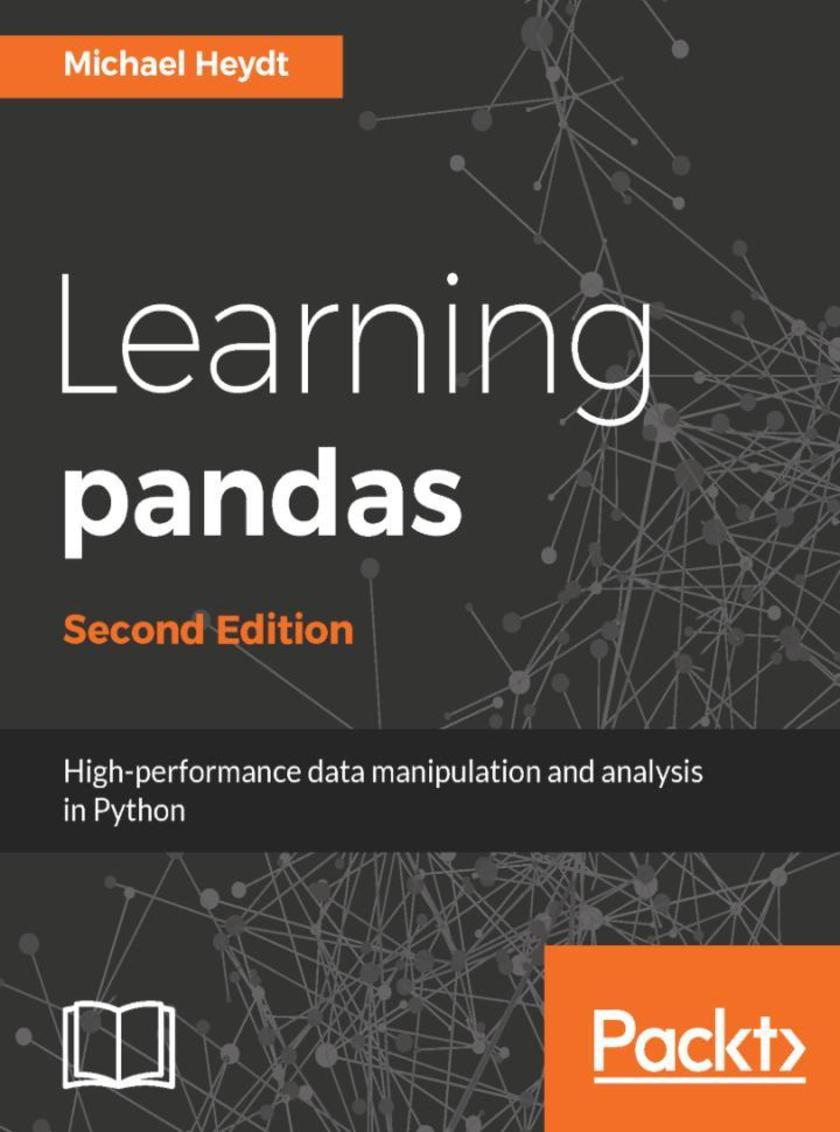
Learning pandas - Second Edition
¥90.46
Get to grips with pandas—a versatile and high-performance Python library for data manipulation, analysis, and discovery About This Book ? Get comfortable using pandas and Python as an effective data exploration and analysis tool ? Explore pandas through a framework of data analysis, with an explanation of how pandas is well suited for the various stages in a data analysis process ? A comprehensive guide to pandas with many of clear and practical examples to help you get up and using pandas Who This Book Is For This book is ideal for data scientists, data analysts, Python programmers who want to plunge into data analysis using pandas, and anyone with a curiosity about analyzing data. Some knowledge of statistics and programming will be helpful to get the most out of this book but not strictly required. Prior exposure to pandas is also not required. What You Will Learn ? Understand how data analysts and scientists think about of the processes of gathering and understanding data ? Learn how pandas can be used to support the end-to-end process of data analysis ? Use pandas Series and DataFrame objects to represent single and multivariate data ? Slicing and dicing data with pandas, as well as combining, grouping, and aggregating data from multiple sources ? How to access data from external sources such as files, databases, and web services ? Represent and manipulate time-series data and the many of the intricacies involved with this type of data ? How to visualize statistical information ? How to use pandas to solve several common data representation and analysis problems within finance In Detail You will learn how to use pandas to perform data analysis in Python. You will start with an overview of data analysis and iteratively progress from modeling data, to accessing data from remote sources, performing numeric and statistical analysis, through indexing and performing aggregate analysis, and finally to visualizing statistical data and applying pandas to finance. With the knowledge you gain from this book, you will quickly learn pandas and how it can empower you in the exciting world of data manipulation, analysis and science. Style and approach ? Step-by-step instruction on using pandas within an end-to-end framework of performing data analysis ? Practical demonstration of using Python and pandas using interactive and incremental examples
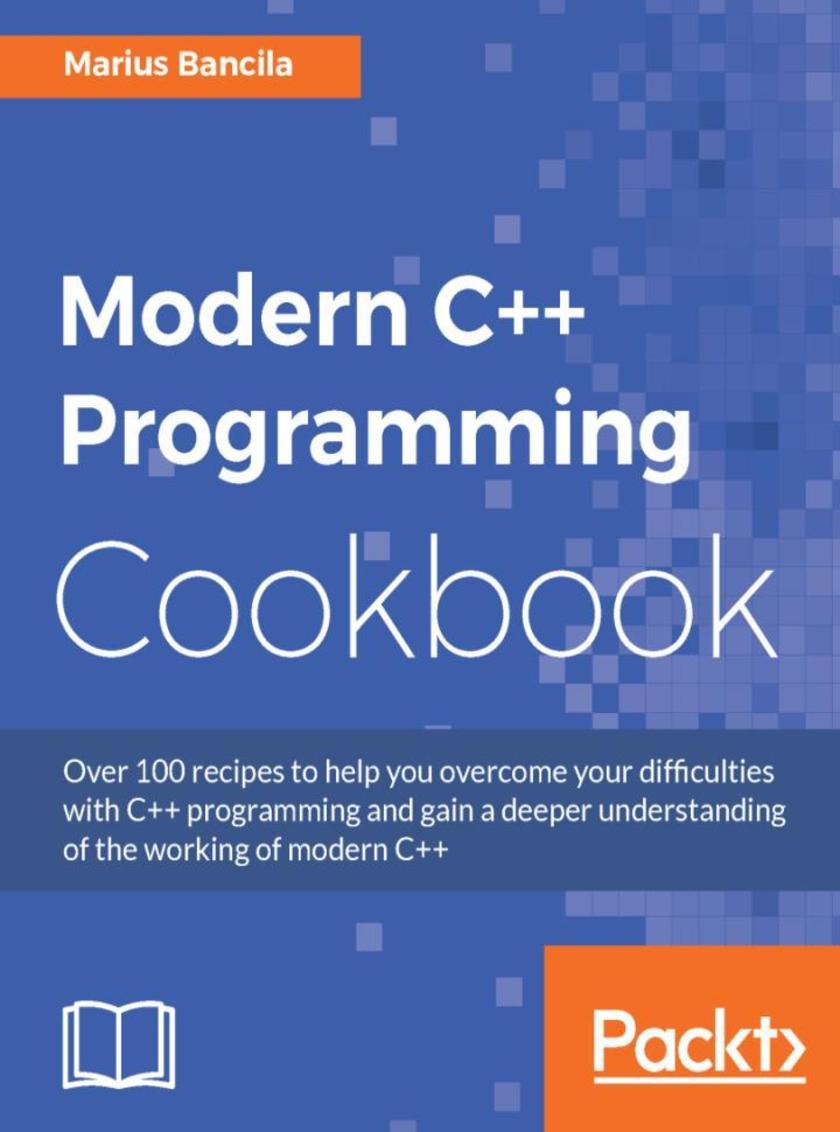
Modern C++ Programming Cookbook
¥90.46
Over 100 recipes to help you overcome your difficulties with C++ programming and gain a deeper understanding of the working of modern C++ About This Book ? Explore the most important language and library features of C++17, including containers, algorithms, regular expressions, threads, and more, ? Get going with unit testing frameworks Boost.Test, Google Test and Catch, ? Extend your C++ knowledge and take your development skills to new heights by making your applications fast, robust, and scalable. Who This Book Is For If you want to overcome difficult phases of development with C++ and leverage its features using modern programming practices, then this book is for you. The book is designed for both experienced C++ programmers as well as people with strong knowledge of OOP concepts. What You Will Learn ? Get to know about the new core language features and the problems they were intended to solve ? Understand the standard support for threading and concurrency and know how to put them on work for daily basic tasks ? Leverage C++’s features to get increased robustness and performance ? Explore the widely-used testing frameworks for C++ and implement various useful patterns and idioms ? Work with various types of strings and look at the various aspects of compilation ? Explore functions and callable objects with a focus on modern features ? Leverage the standard library and work with containers, algorithms, and iterators ? Use regular expressions for find and replace string operations ? Take advantage of the new filesystem library to work with files and directories ? Use the new utility additions to the standard library to solve common problems developers encounter including string_view, any , optional and variant types In Detail C++ is one of the most widely used programming languages. Fast, efficient, and flexible, it is used to solve many problems. The latest versions of C++ have seen programmers change the way they code, giving up on the old-fashioned C-style programming and adopting modern C++ instead. Beginning with the modern language features, each recipe addresses a specific problem, with a discussion that explains the solution and offers insight into how it works. You will learn major concepts about the core programming language as well as common tasks faced while building a wide variety of software. You will learn about concepts such as concurrency, performance, meta-programming, lambda expressions, regular expressions, testing, and many more in the form of recipes. These recipes will ensure you can make your applications robust and fast. By the end of the book, you will understand the newer aspects of C++11/14/17 and will be able to overcome tasks that are time-consuming or would break your stride while developing. Style and approach This book follows a recipe-based approach, with examples that will empower you to implement the core programming language features and explore the newer aspects of C++.
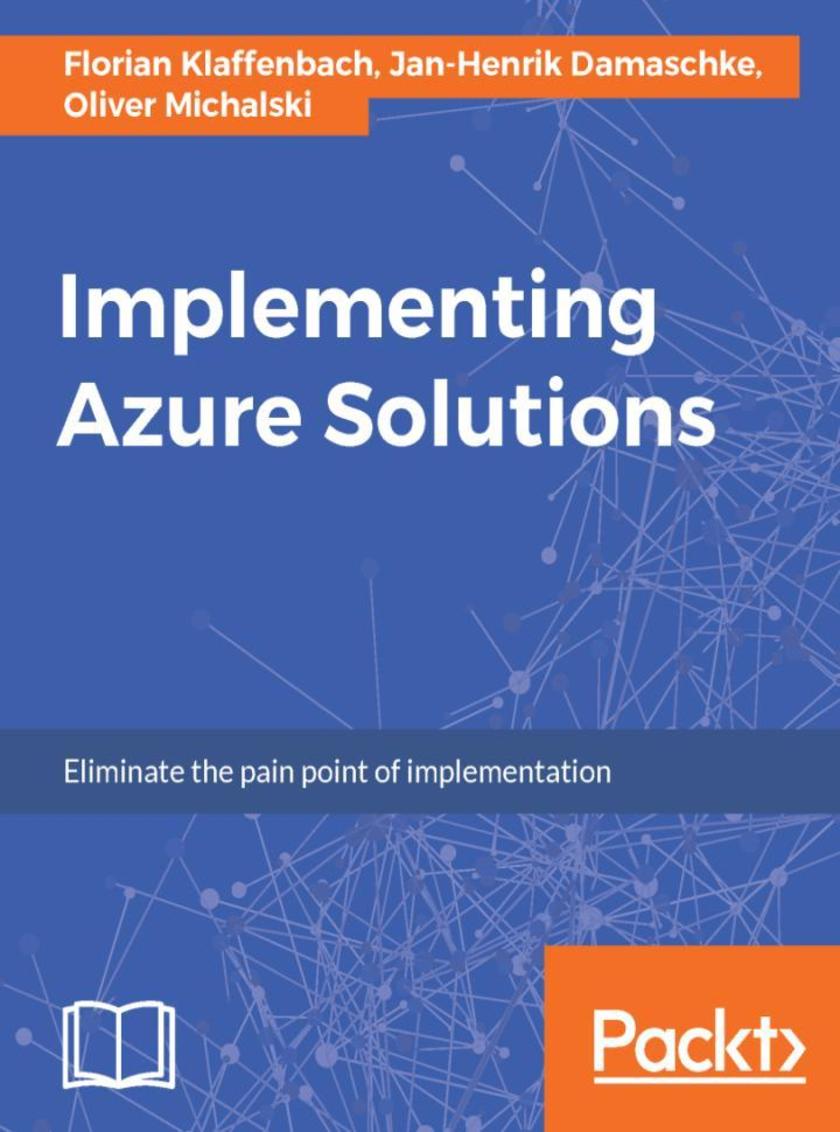
Implementing Azure Solutions
¥90.46
A practical guide that enhances your skills in implementing Azure solutions for your organization About This Book ? Confidently configure, deploy, and manage cloud services and virtual machines ? Implement a highly-secured environment and respond to threats with increased visibility ? This comprehensive guide is packed with exciting practical scenarios that enable you to implement Azure solutions with ease Who This Book Is For This book is for IT architects, system and network admins, and DevOps engineers who are aware of Azure solutions and want to implement them for their organization. What You Will Learn ? Implement virtual networks, network gateways, Site-to-Site VPN, ExpressRoute, routing, and network devices ? Understand the working of different storage accounts in Azure ? Plan, deploy, and secure virtual machines ? Deploy and manage Azure Containers ? Get familiar with some common Azure usage scenarios In Detail Microsoft Azure has numerous effective solutions that shape the future of any business. However, the major challenge that architects and administrators face are implementing these solutions appropriately. Our book focuses on various implementation scenarios that will help overcome the challenge of implementing Azure’s solutions in a very efficient manner and will also help you to prepare for Microsoft Architect exam. You will not only learn how to secure a newly deployed Azure Active Directory but also get to know how Azure Active Directory Synchronization could be implemented. To maintain an isolated and secure environment so that you can run your virtual machines and applications, you will implement Azure networking services. Also to manage, access, and secure your confidential data, you will implement storage solutions. Toward the end, you will explore tips and tricks to secure your environment. By the end, you will be able to implement Azure solutions such as networking, storage, and cloud effectively. Style and approach This step-by-step guide focuses on implementing various Azure solutions for your organization. The motive is to provide a comprehensive exposure and ensure they can implement these solutions with ease.

Architectural Patterns
¥90.46
Learn the importance of architectural and design patterns in producing and sustaining next-generation IT and business-critical applications with this guide. About This Book ? Use patterns to tackle communication, integration, application structure, and more ? Implement modern design patterns such as microservices to build resilient and highly available applications ? Choose between the MVP, MVC, and MVVM patterns depending on the application being built Who This Book Is For This book will empower and enrich IT architects (such as enterprise architects, software product architects, and solution and system architects), technical consultants, evangelists, and experts. What You Will Learn ? Understand how several architectural and design patterns work to systematically develop multitier web, mobile, embedded, and cloud applications ? Learn object-oriented and component-based software engineering principles and patterns ? Explore the frameworks corresponding to various architectural patterns ? Implement domain-driven, test-driven, and behavior-driven methodologies ? Deploy key platforms and tools effectively to enable EA design and solutioning ? Implement various patterns designed for the cloud paradigm In Detail Enterprise Architecture (EA) is typically an aggregate of the business, application, data, and infrastructure architectures of any forward-looking enterprise. Due to constant changes and rising complexities in the business and technology landscapes, producing sophisticated architectures is on the rise. Architectural patterns are gaining a lot of attention these days. The book is divided in three modules. You'll learn about the patterns associated with object-oriented, component-based, client-server, and cloud architectures. The second module covers Enterprise Application Integration (EAI) patterns and how they are architected using various tools and patterns. You will come across patterns for Service-Oriented Architecture (SOA), Event-Driven Architecture (EDA), Resource-Oriented Architecture (ROA), big data analytics architecture, and Microservices Architecture (MSA). The final module talks about advanced topics such as Docker containers, high performance, and reliable application architectures. The key takeaways include understanding what architectures are, why they're used, and how and where architecture, design, and integration patterns are being leveraged to build better and bigger systems. Style and Approach This book adopts a hands-on approach with real-world examples and use cases.
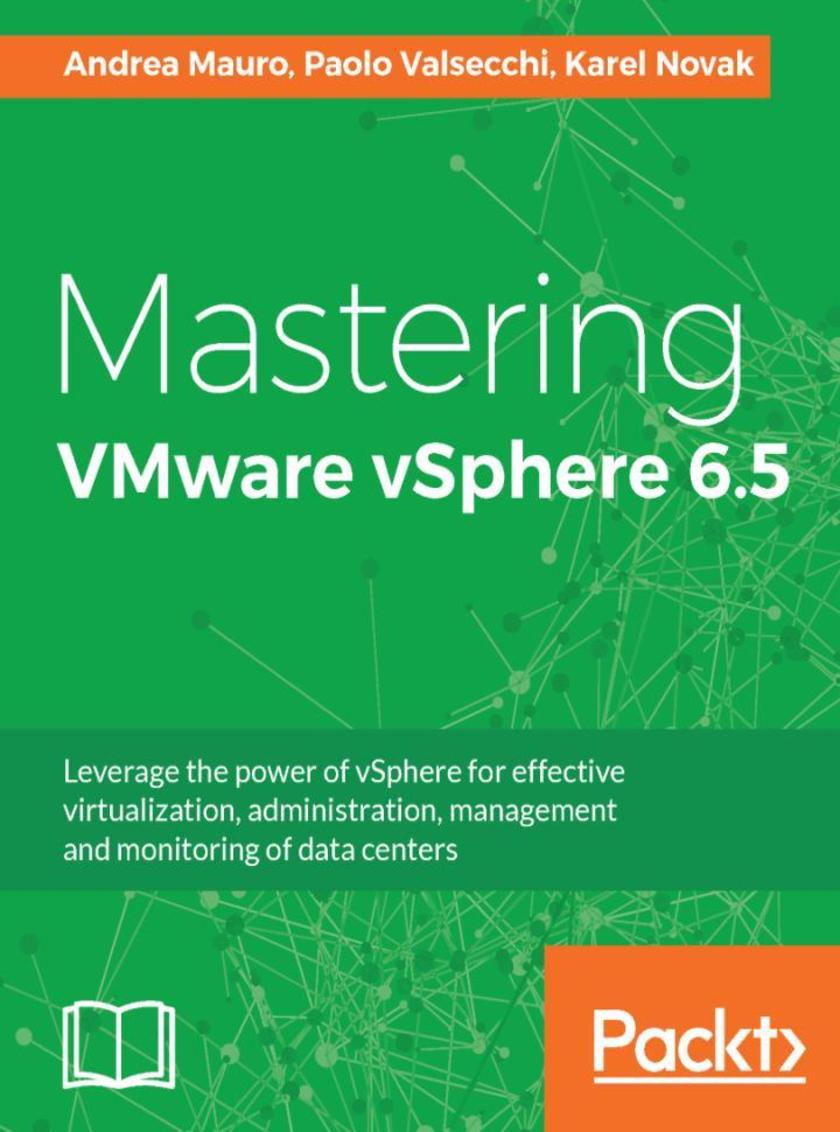
Mastering VMware vSphere 6.5
¥90.46
Deliver great business value by adopting the virtualization platform VMware vSphere 6.5, from the design to the deployment About This Book ? This new edition is based on vSphere 6.5 and has described new features in different areas, including management, security, scalability, availability and so on. ? Design, deploy and manage VMware datacenters ? Implement monitoring and security of VMware workloads with ease. Who This Book Is For If you are an administrator, infrastructure engineer, IT architect, or an IT consultant and analyst who has basic knowledge of VMware vSphere and now wants to master it, then this book is for you. What You Will Learn ? Get a deep understanding of vSphere 6.5 functionalities ? Design and plan a virtualization environment based on vSphere 6.5 ? Manage and administer a vSphere 6.5 environment and resources ? Get tips for the VCP6-DCV and VCIX6-DCV exams (along with use of the vSphere 6 documentation) ? Implement different migration techniques to move your workload across different environments. ? Save your configuration, data and workload from your virtual infrastructure. In Detail VMware vSphere 6.5 provides a powerful, flexible and secure foundation for next-generation applications which helps you create an effective digital transformation. This book will be based on VMware vSphere 6.5 which empowers you to virtualize any complex application with ease. You’ll begin by getting an overview of all the products, solutions and features of the vSphere 6.5 suite, comparing the evolutions with the previous releases. Next ,you’ll design and plan a virtualization infrastructure to drive planning and performance analysis. Following this , you will be proceeding with workflow and installation of components. New network trends are also covered which will help you in optimally designing the vSphere environment. You will also learn the practices and procedures involved in configuring and managing virtual machines in a vSphere infrastructure. With vSphere 6.5, you’ll make use of significantly more powerful capabilities for patching, upgrading, and managing the configuration of the virtual environment. Next we’ll focus on specific availability and resiliency solutions in vSphere. Towards the end of the book you will get information on how to save your configuration, data and workload from your virtual infrastructure. By the end of the book you’ll learn about VMware vSphere 6.5 right from design to deployment and management. Style and Approach This book acts as a reference guide providing real-world scenarios and a possible baseline for each virtualization project based on VMware vSphere.
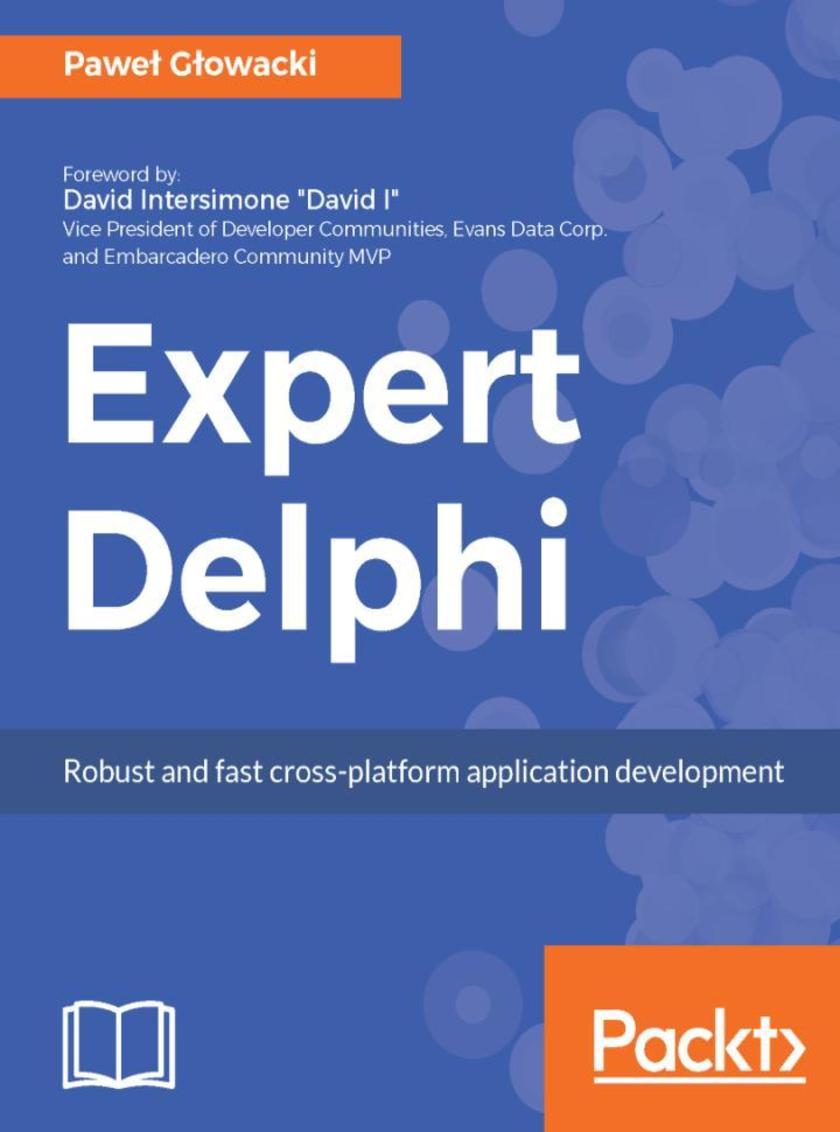
Expert Delphi
¥90.46
Become a developer superhero and build stunning cross-platform apps with Delphi About This Book ? A one-stop guide on Delphi to help you build cross-platform apps ? This book covers important concepts such as the FireMonkey library, shows you how to interact with the Internet of Things, and enables you to integrate with Cloud services ? The code is explained in detail with observations on how to create native apps for Ios and Android with a single code base Who This Book Is For If you want to create stunning applications for mobile, desktop, the cloud, and the Internet of Things, then this book is for you. This book is for developers who would like to build native cross-platform apps with a single codebase for iOS and Android. A basic knowledge of Delphi is assumed, although we do cover a primer on the language. What You Will Learn ? Understand the basics of Delphi and the FireMonkey application platform as well as the specifics of Android and iOS platforms ? Complete complex apps quickly with access to platform features and APIs using a single, easy-to-maintain code base ? Work with local data sources, including embedded SQL databases, REST servers, and Backend-as-a-Service providers ? Take full advantage of mobile hardware capabilities by working with sensors and Internet of Things gadgets and devices ? Integrate with cloud services and data using REST APIs and scalable multi-tier frameworks for outstanding multi-user and social experience ? Architect and deploy powerful mobile back-end services and get super-productive by leveraging Delphi IDE agile functionality ? Get to know the best practices for writing a high-quality, reliable, and maintainable codebase in the Delphi Object Pascal language In Detail Delphi is the most powerful Object Pascal IDE and component library for cross-platform native app development. It enables building natively compiled, blazingly fast apps for all major platforms including Android, iOS, Windows, Mac, and Linux. If you want to build server-side applications, create web services, and have clear GUIs for your project, then this book is for you. The book begins with a basic primer on Delphi helping you get accustomed to the IDE and the Object Pascal language and will then quickly move on to advanced-level concepts. Through this book, we’ll help you understand the architecture of applications and will teach you the important concepts of the FireMonkey library, show you how to build server-side services, and enable you to interact with the Internet of Things. Towards the end, you will learn to integrate your app with various web services and deploy them. By the end of the book, you will be able to build powerful, cross-platform, native apps for iOS and Android with a single code base. Style and approach This book will help you build cross-platform mobile apps with Delphi using a step-by-step approach.
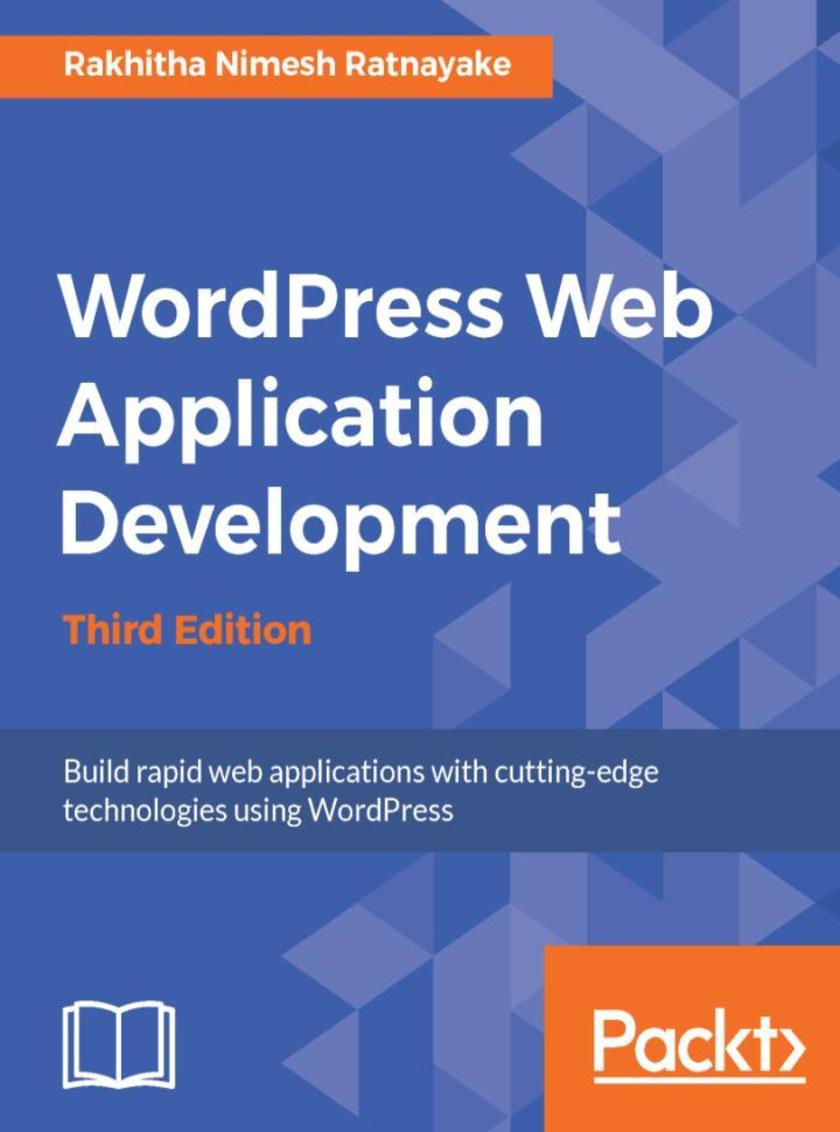
Wordpress Web Application Development - Third Edition
¥90.46
Learn in easy stages how to rapidly build leading-edge web applications from scratch. About This Book ? Develop powerful web applications rapidly with WordPress ? Explore the significant features and improvements introduced in WordPress 4.7 by learning the numerous tips and techniques in this book. ? Unleash the power of REST API endpoints to make your interaction with websites new and innovative. Who This Book Is For This book is targeted at WordPress developers and designers who want to develop quality web applications within a limited time frame and maximize their profits. A prior knowledge of basic web development and design is assumed. What You Will Learn ? Develop extendable plugins with the use of WordPress features in core modules ? Develop pluggable modules to extend the core features of WordPress as independent modules ? Manage permissions for a wide range of content types in web applications based on different user types ? Follow WordPress coding standards to develop reusable and maintainable code ? Build and customize themes beyond conventional web layouts ? Explore the power of core database tables and understand the limitations when designing database tables for large applications ? Integrate open source modules into WordPress applications to keep up with the latest open source technologies ? Customize the WordPress admin section and themes to create the look and feel of a typical web application In Detail WordPress is one of the most rapidly expanding markets on the Web. Learning how to build complex and scalable web applications will give you the ability and knowledge to step into the future of WordPress. WordPress 4.7 introduces some exciting new improvements and several bug fixes, which further improve the entire development process.This book is a practical, scenario-based guide to expanding the power of the WordPress core modules to develop modular and maintainable real-world applications from scratch. This book consistently emphasizes adapting WordPress features into web applications. It will walk you through the advanced usages of existing features such as access controlling; database handling; custom post types; pluggable plugins; content restrictions; routing; translation; caching; and many more, while you build the backend of a forum management application. This book begins by explaining how to plan the development of a web application using WordPress' core features. Once the core features are explained, you will learn how to build an application by extending them through custom plugin development. Finally, you will explore advanced non-functional features and application integration. After reading this book, you will have the ability to develop powerful web applications rapidly within limited time frames. Style and approach An extensive, practical guide that explains how to adapt WordPress features, both conventional and trending, for web applications.




 购物车
购物车 个人中心
个人中心



